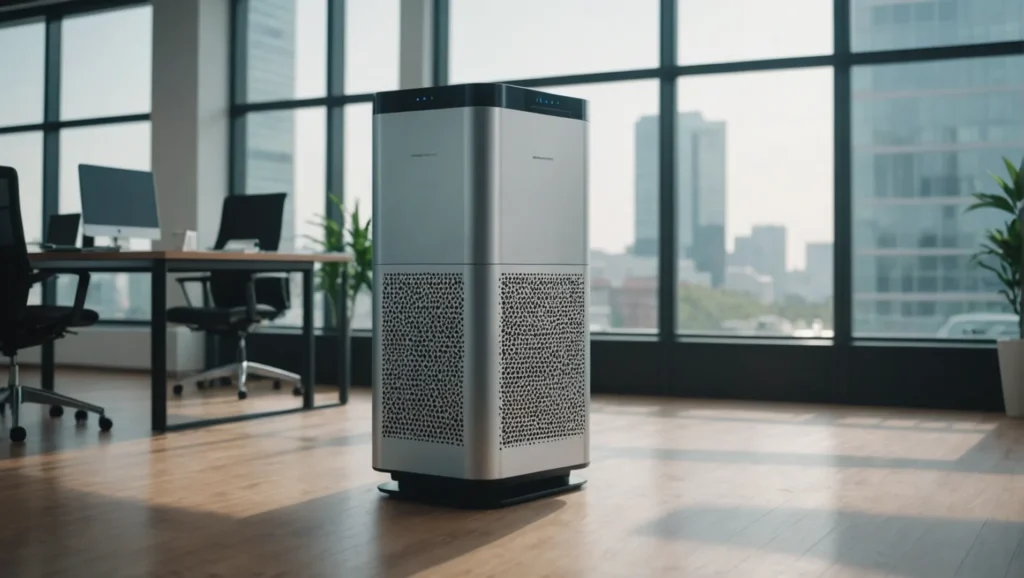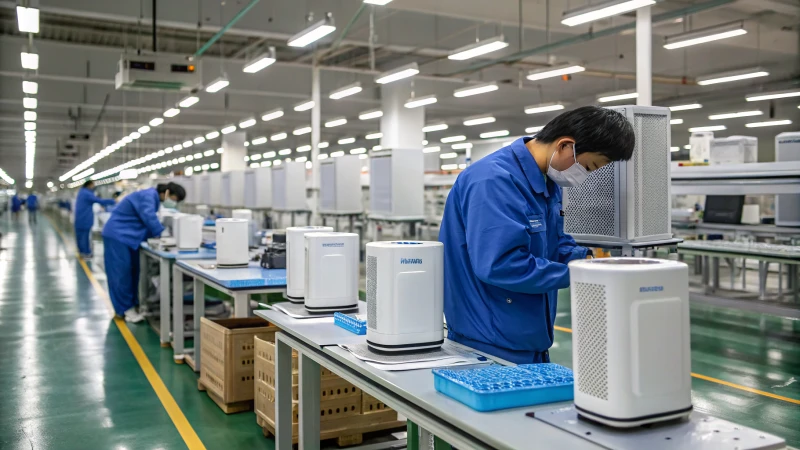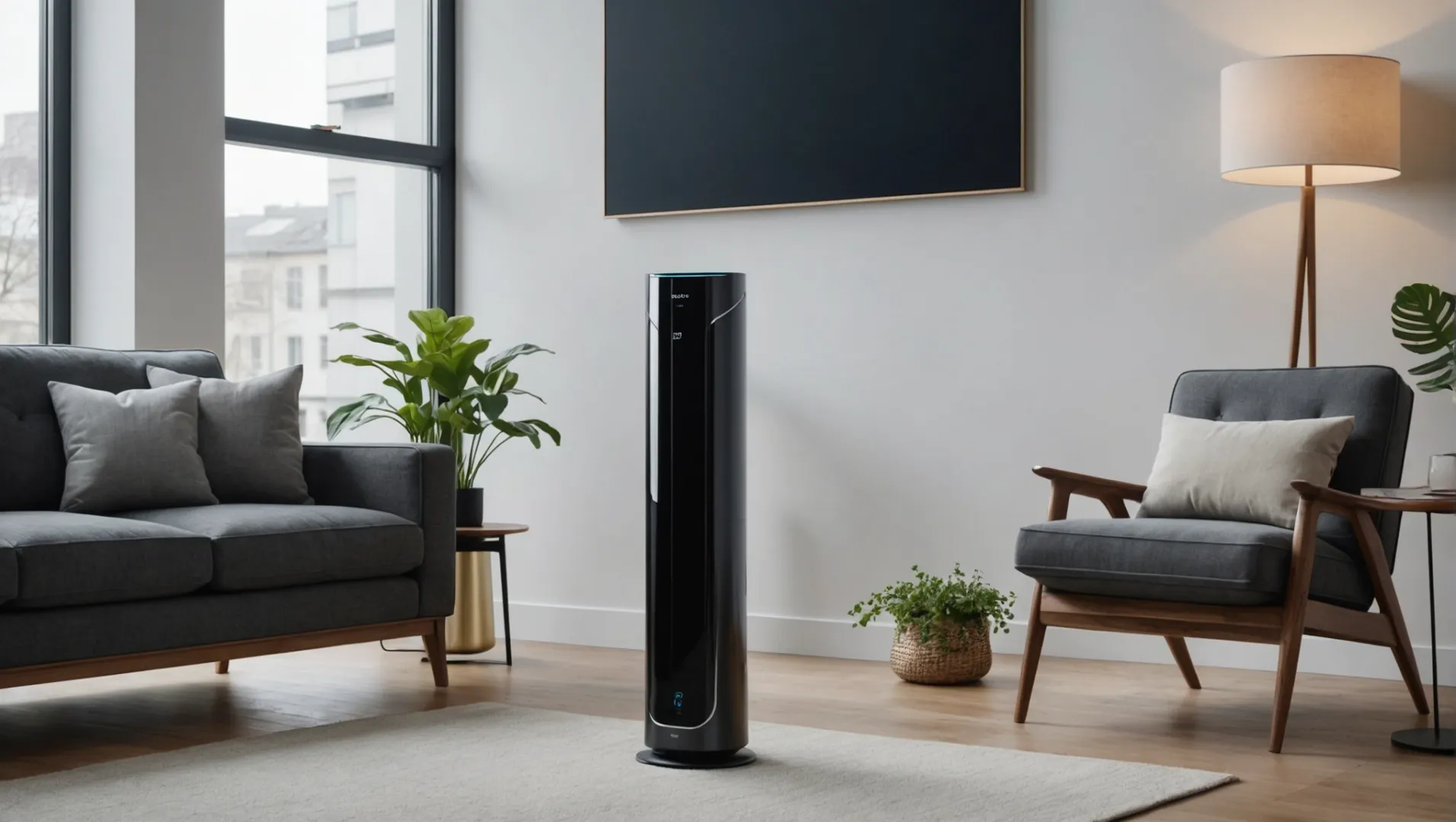
집에 들어섰을 때 금방 상쾌한 기분이 드는 것을 상상해 보세요. 이것이 바로 경이로움입니다. IoT 인공지능이 공기청정기를 소개합니다!
IoT 와 AI는 실시간 모니터링, 공기질 데이터에 기반한 자동 조정, 에너지 효율 개선을 통해 공기청정기의 기능을 향상시킵니다. 이러한 기술은 최적의 공기질을 보장하여 더 건강하고 쾌적한 생활 환경을 제공합니다.
간단한 공기청정기가 어떤 기능을 하는지 누구나 알고 있습니다. IoT 그리고 인공지능은 모든 것을 변화시킵니다. 이러한 흥미로운 변화는 많은 새로운 기능을 가져옵니다. 최신 공기청정기는 이제 이전보다 더 스마트하게 작동합니다.
IoT 공기청정기는 실시간 공기질 모니터링 기능을 제공합니다.True
IoT 기술을 통해 공기청정기에 대한 지속적인 관찰과 데이터 수집이 가능합니다.
지원되는 주요 기능은 무엇인가요? IoT 공기청정기를 사용하시나요?
방법 알아보기 IoT 연결하면 공기 청정기의 성능과 사용 편의성이 향상됩니다.
IoT-지원 공기청정기는 실시간 모니터링, 원격 제어, 에너지 최적화, 다른 스마트 홈 시스템과의 통합 기능을 갖추고 있어 공기질과 편의성을 개선합니다.
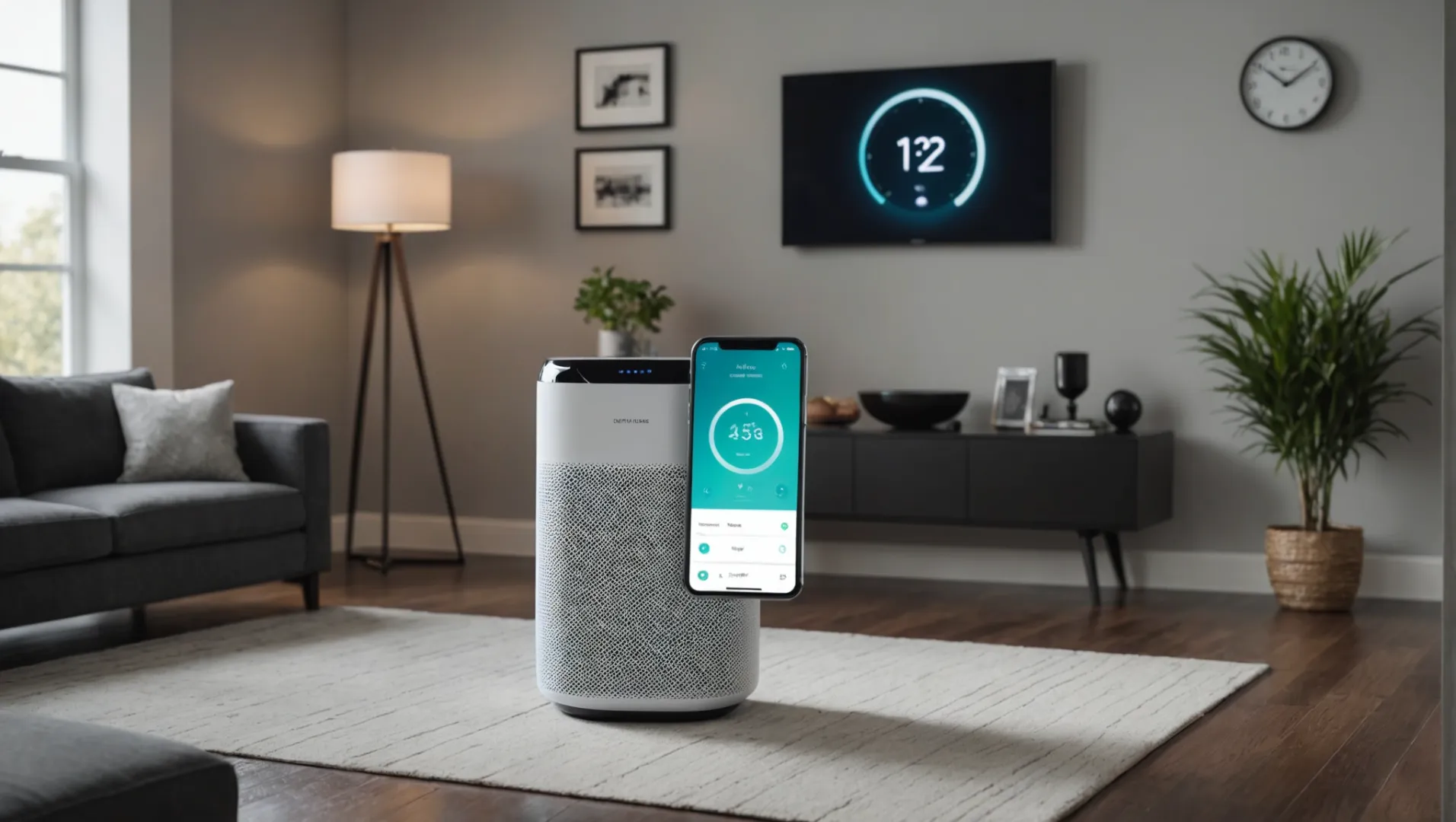
지속적인 공기질 점검 및 정보 수집
IoT 기술을 통해 공기청정기는 항상 공기질을 관찰하고 일정 기간 동안 데이터를 수집합니다. 이를 통해 공기 청정기는 공기 상태 추세를 연구하고 필요한 경우 스스로 조정합니다. 사람들은 휴대폰이나 기타 기기를 통해 주변 환경의 오염 물질에 대한 자세한 보고서를 관찰합니다.
멀리 떨어진 곳에서 제어
다음과 같은 큰 장점이 있습니다. IoT 멀리 떨어진 곳에서도 제어할 수 있습니다. 사람들은 어디서든 모바일 앱이나 온라인 플랫폼으로 공기청정기를 작동합니다. 이 기능은 집에 없을 때 설정을 변경하거나 도착하기 전에 공기질이 좋은지 확인하는 데 유용합니다. 또한 개인 일정이나 취향에 따라 자동으로 변경할 수도 있습니다.
에너지 및 비용 절약
IoT 공기청정기는 스마트한 작동으로 에너지 사용을 줄입니다. 센서를 사용해 청소가 필요한 시기를 파악하므로 쉬지 않고 작동하는 대신 필요한 경우에만 작동합니다. 이 기능은 에너지를 보호하고 필터 수명을 연장하며 유지 관리 비용을 줄여줍니다.
| 기능 | 혜택 |
|---|---|
| 지속적인 확인 | 논스톱 대기질 업데이트 및 이해 제공 |
| 원거리 제어 | 어디서든 쉽게 제어할 수 있습니다. |
| 에너지 절약 | 에너지 사용 및 운영 비용 절감 |
지능형 홈 시스템과의 간편한 통합
IoT 공기청정기는 온도 조절기, 조명, 음성 시스템과 같은 다른 스마트 기기와 원활하게 연동됩니다. 이러한 연결을 통해 집 주변 환경을 완벽하게 제어할 수 있으므로 이상적인 생활 환경을 간편하게 유지할 수 있습니다. 예를 들어, 오염도가 높아지면 공기청정기는 다음과 같은 메시지를 보냅니다. HVAC 시스템을 사용하여 필요에 따라 환기를 변경할 수 있습니다.
As IoT 기술이 발전함에 따라 공기청정기에 더 창의적인 기능이 추가되어 우리의 쾌적함과 건강이 향상될 것으로 기대됩니다.
IoT 공기청정기는 실시간 공기질 모니터링 기능을 제공합니다.True
IoT 기술은 논스톱으로 공기질 정보를 제공합니다.
IoT 공기청정기는 원격 제어가 불가능합니다.False
앱을 통해 사용자는 어느 위치에서나 공기청정기를 제어할 수 있습니다.
AI는 대기질 관리를 어떻게 개선하나요?
AI는 더 스마트하고 효과적인 옵션을 제공하여 공기질을 처리하는 방식을 변화시킵니다.
AI는 예측 분석, 자동화 및 실시간 데이터 처리를 통해 공기질 관리를 개선하여 실내 및 실외 공기 환경을 개선합니다.

예측 분석 및 실시간 모니터링
인공 지능(AI)은 예측 분석을 활용하여 대기질 변화가 발생하기 전에 예측합니다. AI 시스템은 과거 및 실시간 데이터를 분석하여 오염이 급증하거나 기타 공기질 변화를 예측할 수 있습니다. 이를 통해 환기 설정을 조정하거나 거주자에게 창문을 닫으라고 경고하는 등 사전 예방적 조치를 취할 수 있습니다.
예를 들어, 스마트 시티에서는 도시 곳곳에 설치된 센서가 오염 물질에 대한 데이터를 수집합니다. AI 알고리즘은 이 데이터를 처리하여 패턴을 파악하고 미래의 대기질 수준을 예측합니다. 도시 대기질 모니터링에 대해 자세히 알아보기1 를 통해 도시들이 이러한 기술을 어떻게 구현하고 있는지 알아보세요.
향상된 공기 정화 시스템
AI 기반 공기청정기는 감지된 공기질에 따라 자동으로 작동을 조정합니다. 이러한 장치는 머신 러닝을 사용하여 특정 환경과 사용자 습관에 적응하여 효율성과 효과를 개선합니다. 예를 들어, AI는 시간대나 재실자 수에 따라 여과 속도와 전력 사용량을 최적화할 수 있습니다.
또한, AI는 다른 스마트 홈 기기와 통합되어 변화하는 환경에 동적으로 반응하는 일관된 환경을 조성할 수 있습니다. 예를 들어, AI가 높은 수준의 미세먼지를 감지하면 조명을 어둡게 하거나 온도 조절기를 조정하여 공기를 정화하는 동시에 쾌적함을 유지할 수 있습니다.
맞춤형 공기질 솔루션
공기질 관리에 AI를 통합하면 개인 맞춤형 환경 제어가 가능해집니다. AI 시스템은 개인의 건강 요구, 선호도 또는 활동에 따라 공기 정화 설정을 맞춤화할 수 있습니다. 이러한 맞춤 설정은 단순히 공기 정화를 넘어 습도, 온도, 소음 수준, 심지어 빛의 강도까지 조절할 수 있습니다.
AI는 시간이 지남에 따라 사용자로부터 데이터를 수집하여 건강과 편안함을 증진하는 개인화된 설정을 추천할 수 있습니다. 개인 맞춤형 공기 정화 작동 방식 살펴보기2 에서 이러한 발전에 대해 자세히 알아보세요.
다음과의 통합 HVAC 시스템
공기질 관리에서 AI의 역할은 독립형 공기청정기에만 국한되지 않습니다. 또한 다음과 같이 확장됩니다. HVAC 시스템을 구축할 수 있습니다. AI 알고리즘은 이러한 시스템의 성능을 최적화하여 우수한 공기질을 유지하면서 효율적으로 작동하도록 보장합니다.
다음과 통합하여 HVAC 시스템을 통해 AI는 실내 환경 관리에 대한 보다 포괄적인 접근 방식을 가능하게 합니다. 에너지 효율이나 쾌적함을 희생하지 않으면서도 최적의 공기질을 보장합니다. AI의 혁신 방법 알아보기 HVAC 시스템3 에서 이러한 혁신에 대한 자세한 내용을 확인하세요.
AI는 공기질 변화가 발생하기 전에 이를 예측할 수 있습니다.True
AI는 과거와 현재의 데이터를 학습하여 대기질의 변화를 예측합니다.
AI는 공기질을 위해 HVAC 시스템과 통합할 수 없습니다.False
AI는 HVAC 기능을 개선하여 실내 공기질을 효과적으로 개선합니다.
공기청정기에 실시간 모니터링이 중요한 이유는 무엇인가요?
공기청정기의 실시간 추적 기능을 통해 변화하는 공기 상태에 빠르게 대응하여 건강을 보호할 수 있습니다.
실시간 모니터링은 공기질에 대한 지속적인 피드백을 제공하여 공기청정기가 최적의 성능을 위해 자동으로 설정을 조정할 수 있도록 합니다. 이 기능은 오염 물질과 알레르겐에 즉각적으로 대응하여 일관되고 안전한 호흡 환경을 보장합니다.
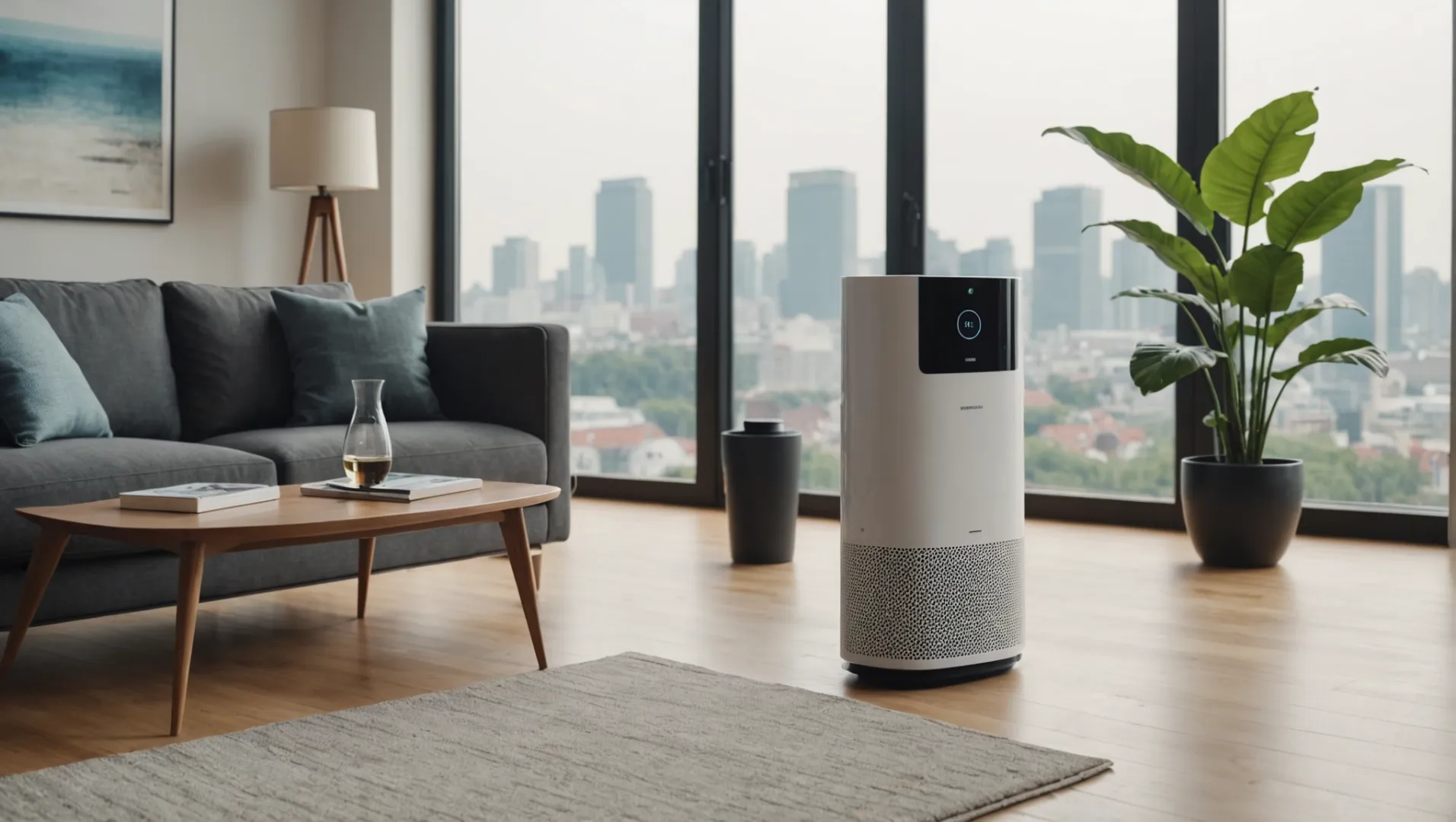
즉각적인 관찰의 역할
즉각적인 관찰을 통해 기존의 공기청정기는 공기 변화에 반응하는 능동적인 도구로 탈바꿈합니다. 이러한 도구는 실내 공기질을 정기적으로 확인함으로써 다음을 보장합니다. 오염 물질 수준4 가 안전한 수준으로 유지되고 공기가 신선하게 유지됩니다. 이는 외부 오염원으로 인해 대기 상태가 급변할 수 있는 도시 환경에서 특히 유용합니다.
사용자 경험 개선
실시간 확인 기능이 있는 공기청정기는 종종 스마트폰에 연결하여 사용자에게 집안 공기질에 대한 업데이트를 제공합니다. 이 기능은 사용자에게 정보를 제공할 뿐만 아니라 원격으로 기기를 제어할 수 있어 편리하고 안심할 수 있습니다. 예를 들어, 요리 연기로 인해 공기 상태가 악화되면 사용자는 신속하게 알림을 받고 집에 없을 때에도 대응할 수 있습니다.
자동화 및 에너지 절약
즉각적인 점검은 공기청정기가 더 효율적으로 작동하는 데 도움이 됩니다. 공기청정기는 현재 공기질 데이터를 기반으로 활동을 조정하여 오염도가 높아지면 더 많은 전력을 사용하고 공기가 맑으면 더 적은 전력을 사용합니다. 이렇게 하면 장치가 불필요하게 과로하지 않으므로 전기를 절약하면서 더 깨끗한 환경을 유지할 수 있습니다.
| 기능 | 혜택 |
|---|---|
| 지속적인 피드백 | 공기질을 최적의 수준으로 유지 |
| 원격 모니터링 | 모든 위치에서 관리 제공 |
| 자체 조정 | 에너지 절약 지원 |
스마트 홈 시스템과의 연결
스마트 홈 설정의 일부로 즉각적인 관찰을 통해 공기청정기가 다른 장치와 통신하여 통합된 환경을 조성할 수 있습니다. 예를 들어 센서가 높은 이산화탄소 수치를 감지하면 공기 흐름을 증가시키기 위해 팬을 작동하거나 쾌적함을 위해 스마트 온도 조절기를 조정할 수 있습니다. 이러한 통합은 다음과 같은 기술을 통해 더욱 원활하게 이루어질 것으로 예상됩니다. Matter5를 사용하여 서로 다른 브랜드의 디바이스가 쉽게 협력할 수 있습니다.
미래에는 개인의 선호도와 건강 상태에 따라 공기 청정을 맞춤화하는 스마트 시스템을 통해 더욱 정교한 실시간 관찰 기능을 제공할 수 있을 것으로 예상됩니다. 이러한 기술이 발전함에 따라 효과와 웰빙을 모두 보장하는 즉각적인 관찰의 역할은 더욱 커질 것입니다.
실시간 모니터링으로 공기청정기를 자동으로 조정합니다.True
실시간 관찰을 통해 공기청정기는 공기질에 따라 설정을 조정할 수 있습니다.
실시간 모니터링 기능이 있는 공기청정기는 에너지를 절약합니다.True
대기 질에 따라 활동을 조정하여 불필요한 에너지 소비를 줄입니다.
미래의 혁신은 공기청정기를 어떻게 변화시킬까요?
앞으로의 공기 정화 기술 발전은 우리의 일상에 자연스럽게 녹아들어 실내에서 숨 쉬는 공기를 새롭게 변화시킬 것입니다.
향후 공기청정기의 혁신은 스마트 홈 시스템과의 통합, AI 기반 개인화, 다음과 조화를 이루는 보이지 않는 디자인에 초점을 맞출 것입니다. HVAC 시스템을 통해 공기질 관리를 강화합니다.
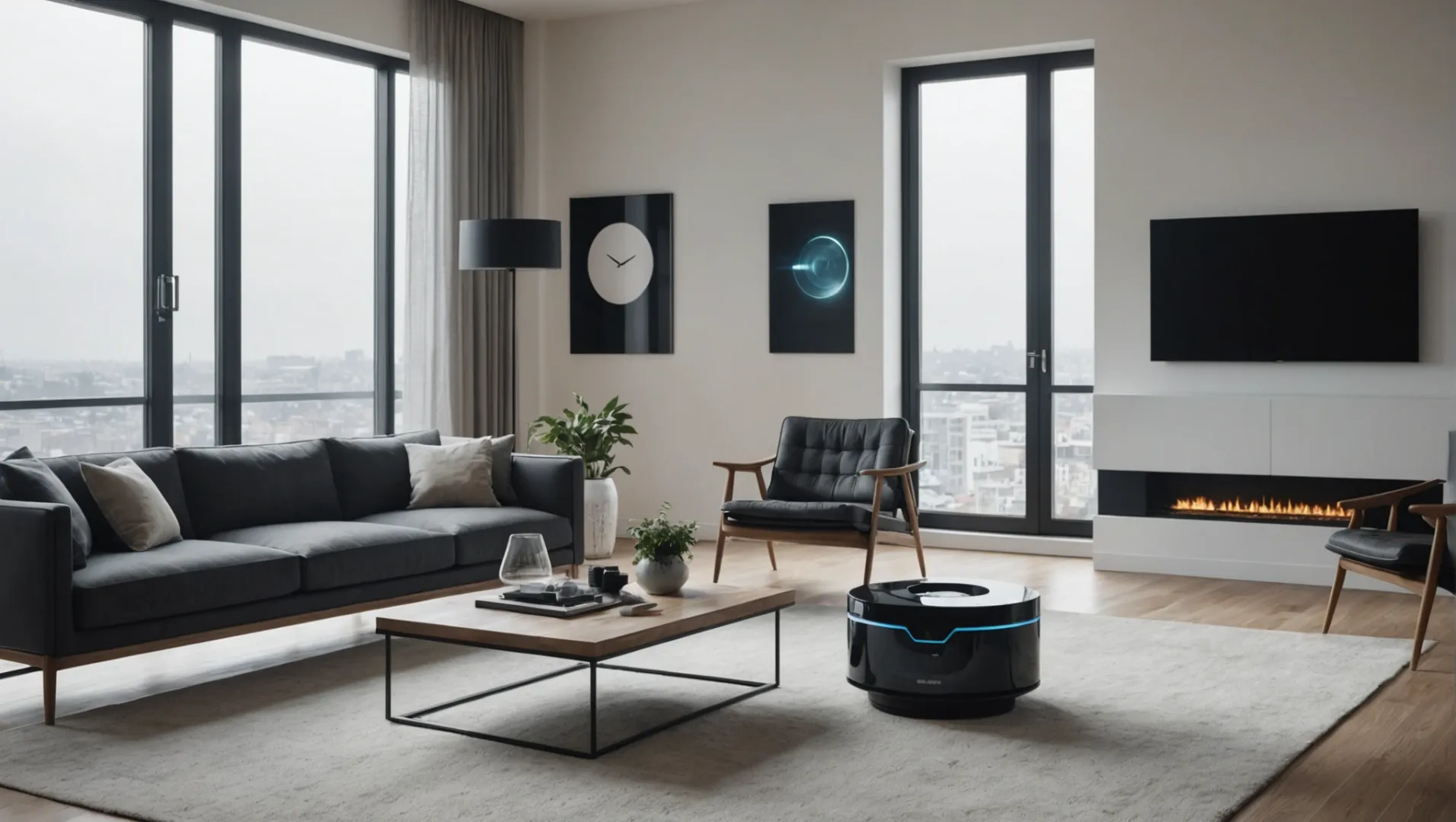
스마트 홈 시스템과 통합
향후 몇 년 안에 공기청정기는 Matter와 같은 설정을 사용하여 스마트 홈 시스템에 합류할 것으로 예상됩니다. 이 설정을 사용하면 다양한 브랜드의 가젯 간에 원활하게 통신할 수 있으므로 공기청정기가 조명, 온도 조절기, 보안 장치와 상호 작용할 수 있습니다. 예를 들어, 온도 조절기가 감지한 온도와 습도 수준에 따라 공기청정기가 자동으로 설정을 조정하여 실내의 쾌적함을 향상시킬 수 있습니다.
AI 기반 사용자 지정
인공지능(AI)은 공기청정 기능에 새로운 맞춤화 요소를 도입할 것으로 기대됩니다. AI 시스템은 사용자의 행동과 선호도를 관찰하여 개인의 필요에 따라 공기질 설정을 조정할 수 있습니다. 여기에는 습도, 온도, 소음 수준, 빛의 강도, 심지어 산소 농도까지 조정하여 개인 맞춤형 웰빙 환경을 조성하는 것이 포함됩니다. 공기를 정화할 뿐만 아니라 업무나 휴식을 위한 최적의 분위기로 설정하는 공기청정기를 상상해 보세요.
숨겨진 공기 정화
미래의 공기청정기는 독립형 장치에서 벗어나 다음과 같은 통합 부품이 될 수 있습니다. HVAC 시스템과 건물 디자인에 변화를 주고 있습니다. 이러한 변화는 공간을 차지하거나 실내 미관을 해치지 않으면서도 공기 청정을 '보이지 않게' 유지하여 더 깨끗한 공기를 제공하는 것을 목표로 합니다. 이러한 시스템은 건물 구조의 일부가 되어 모든 공간에서 지속적인 공기질 관리를 제공합니다.
고급 데이터 이해 및 모니터링
의 발전으로 IoT 및 AI를 통해 향후 출시될 공기청정기는 향상된 데이터 이해 기능을 제공할 수 있습니다. 조기 유지보수를 위한 실시간 추적 및 알림 기능이 표준 기능이 되어 사용자가 실내 공기질을 선제적으로 관리할 수 있게 될 수 있습니다. 여기에는 필터 교체가 필요하거나 비정상적인 공기질 패턴이 감지될 때 알림이 포함될 수 있습니다.
이러한 혁신6 는 공기청정기에 대한 인식과 사용 방식을 변화시켜 스마트하고 건강한 가정의 필수 구성 요소로 자리 잡을 것입니다.
공기청정기는 스마트 홈 시스템과 통합됩니다.True
미래의 공기청정기는 Matter와 같은 스마트 홈 시스템과 연동될 수 있습니다.
AI는 공기청정기 설정에 영향을 미치지 않습니다.False
AI는 사용자 선택에 따라 공기 청정을 맞춤화할 수 있습니다.
결론
IoT 와 AI는 공기를 깨끗하게 유지하는 방법을 바꾸고 있습니다. 건강한 생활 공간을 위해 이러한 개선 사항을 수용하세요.
-
도시에서 대기질 모니터링에 AI를 활용하는 방법을 알아보세요: CALIOPE-Urban은 BSC 대기질 예측 시스템인 CALIOPE 지역 모델의 기술을 도시 모델과 결합하여 ... ↩
-
맞춤형 공기 정화에서 AI의 역할을 이해합니다: AI 기반 공기 모니터링 | 신속한 공기 청정 | 획기적인 확장형 시스템 | 낮은 유지보수 비용 | 향기 모드 | IoT 및 무료 앱. ↩
-
AI가 HVAC 시스템 효율성에 미치는 영향에 대해 알아보세요: AI는 HVAC 시스템에 괄목할 만한 발전을 가져왔습니다. 이러한 발전에는 지능형 데이터 분석, 예측 유지보수, 에너지 최적화, 고장 ... ↩
-
실시간 오염 모니터링을 통해 건강과 안전을 향상시키는 방법을 알아보세요: 대기질 모니터링은 대기질을 개선하고 공중 보건을 보호하며 규정을 준수하는 데 중요한 도구입니다. ↩
-
Matter가 스마트 홈 기기를 원활하게 연결하는 방법을 알아보세요: Matter 캐스팅을 사용하면 지원되는 스마트폰 앱의 콘텐츠를 TV 또는 스마트 디스플레이로 전송할 수 있지만, Amazon이 유일한 회사처럼 보이기는 하지만 ... ↩
-
차세대 공기 정화 기술을 형성하는 최첨단 개발에 대해 알아보세요...: 이러한 혁신 중 하나는 UVGI 공기 정화 기술입니다. UVGI는 자외선 살균 조사의 약자이며 ... ↩


